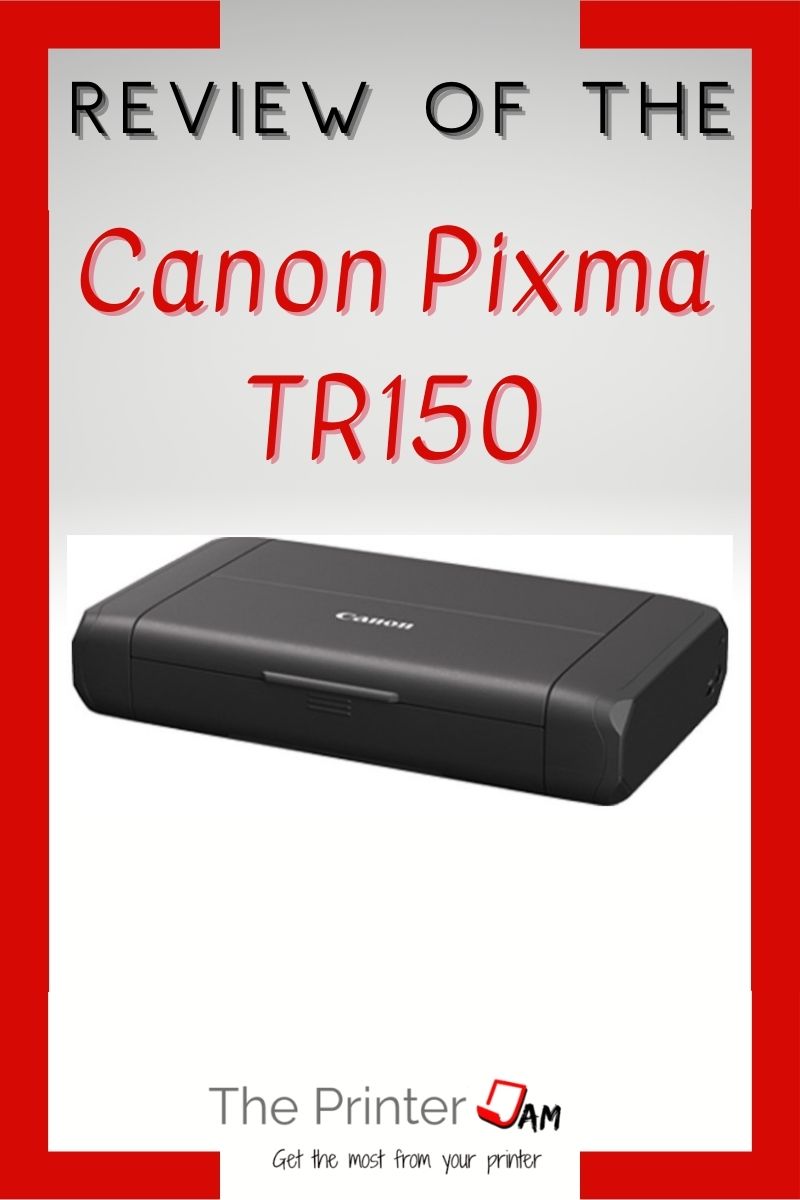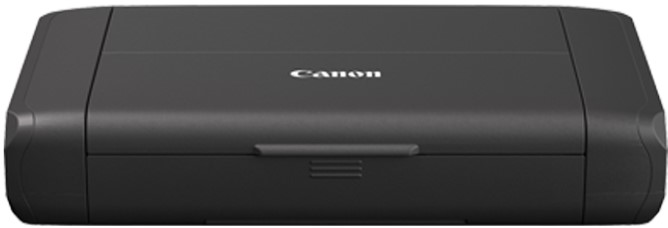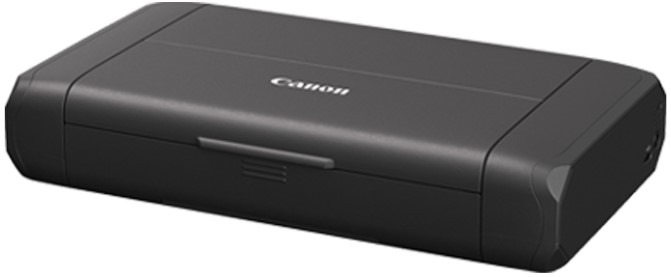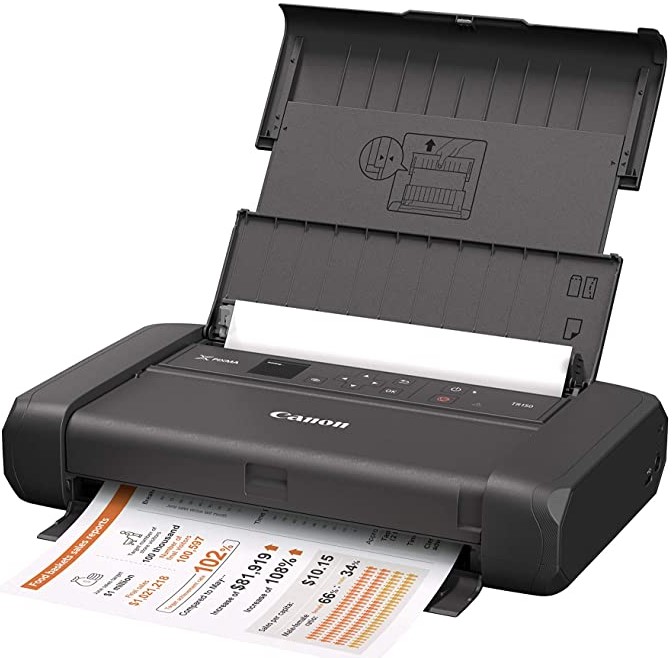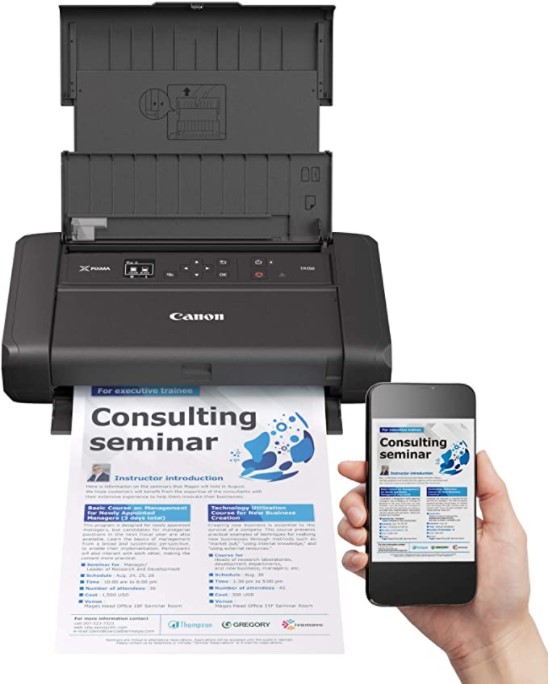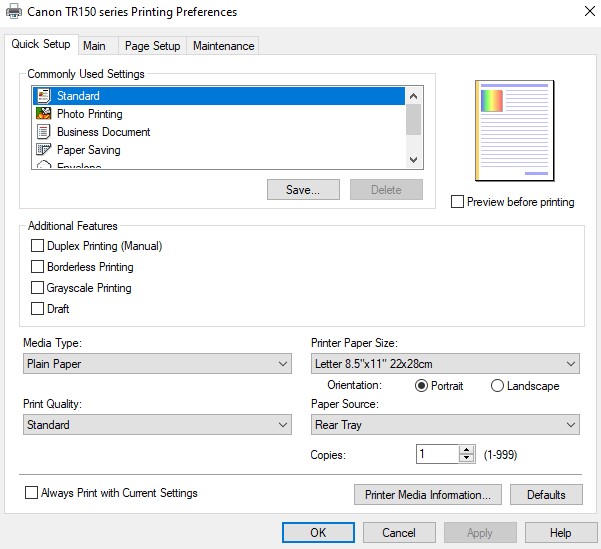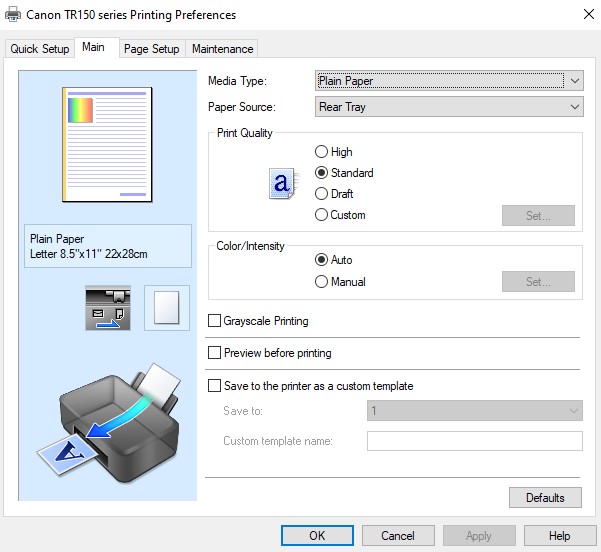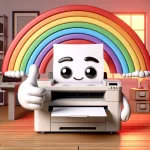The Canon PIXMA TR150 is one of their latest portable color printers. It combines portability with the high quality of the Canon Pixma line. If being able to print while out of the office is what you’re looking for, this printer is worth checking out. It is small and light enough to fit in a backpack or laptop case. The molded plastic frame is rugged and durable enough to be transported around regularly. A great solution for printing on the go.
It can be connected by WiFi or USB. Setup is simple with any device. It works readily with Mac devices too. Canon includes terrific support for mobile devices.
One downside is it doesn’t automatically print two sided. Neither do other portable printers such as the HP Officejet 200 or Epson WF-110. Auto duplex would require a lot more components. Which would increase the size, weight, and battery consumption. They don’t scan or copy for the same reasons. Although HP does have an all in one version of their portable printer, the Officejet 250.
Pros
Cons
Setup
Setup is simple for the Canon Pixma TR150. I removed minimal packing then installed the print head and ink cartridges. I recommend saving the orange cap for the print head. Which is handy for lengthy transportation or storage. It will prevent the nozzles from drying out or any damage if the printer gets bounced around. The ink cartridges are separate from the print head but both are easy to access.
The TR150 has WiFi direct so smartphones, tablets, Chromebooks, laptops, and Macs can easily connect to the printer. For Windows and Android devices an app needs installed. Which sets up everything. Macs and most Chromebooks will automatically setup everything.
It can also connect to a local wireless network, but that may not be the best solution for a portable printer. Who wants to add a new network at various locations? With WiFi direct the setup is done once, then that network goes everywhere the printer goes. Turn on the printer and whatever device you’re printing from and it’s ready to go.
Once ready, I tested the weight and proportions. I used a standard scale and ruler. I found the Canon Pixma TR150 weighed only 5.1 lbs, about as much as a heavy laptop.
My measurements revealed a printer 12.8 inches wide, 7.5 inches deep, and 2.6 inches high. It’s about the size of two small keyboards stacked on top of each other.
An extremely compact and light printer. I did have to open the lid to add paper and use it. But it didn’t add much to its footprint since the tray flips up. It holds 50 sheets of paper.
Features
To test the print speed I printed pictures of cats and dogs. Less coverage than ISO/IEC 19798 and 24711 standard color test pages but they served my purposes. My color test pages clocked in at 5.8 pages per minute. Slow but not much slower than the average inkjet printer. The quality was good for a 4 color inkjet printer.
My B&W test pages were just emails, so much less coverage than a standard ISQ/IEC 19752 B&W test page. I clocked those pages at 9.4 ppm. My test pages had light coverage, but it still seemed slow even though the bottom half was blank.
Considering it’s a portable printer running on battery power, I wasn’t expecting it to be fast. However, the Epson and HP are both slightly slower at 7 ppm. While on battery they all print a page or two slower. Some trade off comes from being able to print on the road.
The control panel is comprised of a few buttons and a 1.44 inch OLED square display. One of the buttons is a WiFi connect button which makes setup from smartphones easier.
There is a lever on the tray to switch between standard and heavy paper. Canon puts this lever on some of their printers from time to time. It’s a good feature but sometimes can get switched by accident.
When it’s in the wrong position it can cause paper jams. Canon improved this switch from previous models by making it smaller and less likely to be accidentally switched on the TR150.
The Canon Pixma TR150 has a duty cycle of 500 pages per month. The print cartridges yield 200 pages.
It has abundant connections: Wifi, Pictbridge, ethernet, and USB. No copy, scan, or fax functions are included. Auto duplex is built into the TR150. It is print only. If you just print color images or documents and don’t have a need for scanning this printer would be a good fit.
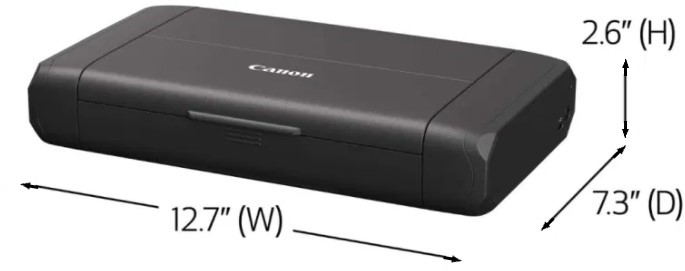
Battery Life
While the Epson WF-110 and HP Officejet include the battery with the printer, Canon opted to sell it separately. When the price of the printer and battery are combined it’s still 10% cheaper than the HP Officejet 200. The Epson WF-110 is 6% cheaper than the Canon’s combined price though.
The optional battery for the Canon Pixma TR150 has the longest batter life of all the portable printers I tested. Its capacity is 2150 mAh and takes about three hours to charge. The Epson battery capacity is 1860 mAh and the HP is only 1050mAh. Canon’s battery is good for 330 color prints but that’s with a USB cable. Wifi increases the load on a battery in my experience.
The secret to long battery life has to do with power consumption. The Canon Pixma TR150 can print using 8 watts or less. Compared to the Epson at 12 watts and the HP at 15 watts. In my experience Canon puts a lot of effort into research and development. It pays off in a case like this. They found a way to print color pages while only consuming 8 watts.
The Epson battery yields 100 pages of B&W and 50 pages of color. Epson offers an additional battery to piggyback on the back to double the print yield. HP doesn’t list the page yield of their battery. Though at half of capacity and almost twice the power consumption of the Canon it’s no wonder HP didn’t say.

Printing
The Canon Pixma TR150 makes no trade offs for print quality. It made good quality photos on 4 x 6. Text is crisp and readable from my test pages. Text always turns out better on inkjet paper but that’s a characteristic of any inkjet printer.
Canon has a unique feature that allows for forms to be stored in the printer. For example, a time sheet, expense form, work order, or legal disclaimer can be stored in the printer. Then printed as many times as needed. They need to be sent from a computer initially. Once stored they are printed from the printers control panel.
Canon’s print drivers cover the basics of printing fairly well. It has some page setup options for size and layout. There are some basic color adjustments and matching settings. Though toggling print options, like disabling the ICM or enabling print data loss, work better than manually adjusting the colors in my experience.
Operating Costs
The Canon PIXMA TR150 operating costs are about average for a portable inkjet printer, which tend to cost a bit more. Mostly because duty cycle is tied to operating costs. Supertank printers represent the best operating costs for inkjet printers but these aren’t portable. Office inkjet printers fall somewhere between the two but they aren’t portable either.
Operating costs for the Canon are 7½ cents a page for B&W and 15 cents for color printing. Compared to the HP at 8 ½ for B&W and 17 for color. The Epson costs less than ¼ of a cent as the HP. Compared with a supertank printer or high duty inkjet those costs are higher. But portable printers are more inline with low volume inkjet printers. For example, an inexpensive inkjet printer like the HP 1112 costs .11 cents a page for B&W and .17 for color.
All things considered the printing costs are a good trade off for portability. I generally don’t recommend tri color ink cartridges but since this one uses atri color ink tank, I’ll make an exception.
One thing about having a separate print head is refilling the tank cartridges is easier. The PGI-35 and PGI-36 cartridges have no print head, they’re just ink. No worry about priming or burning out nozzles. Just refill the cartridge with the right ink since it uses pigment ink for black and dye ink for color. Refilling or compatible cartridges can bring the printing costs down considerably.
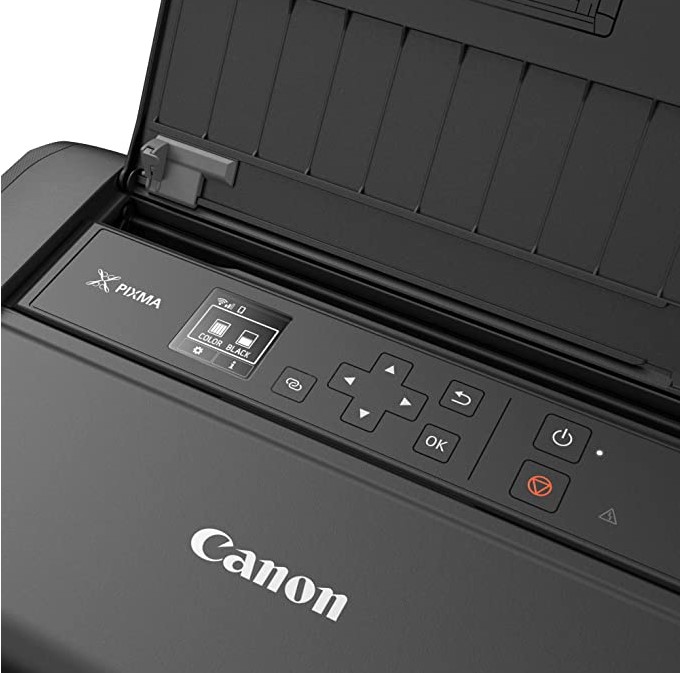
Summary
The Canon PIXMA TR150 is one of the cheapest ways to print while on the road. It may be a little on the slow side but makes up for that with print quality. It’s small size, light weight, and long battery life make set it apart from other portable printers. As a tech my car was my office. Although I was working on printers and copiers all day, I can see how having a printer like this would be an asset to anyone without access to conventional office equipment.
Pros
Cons

The Copier Guy, aka Dave. I’ve worked on scanners, printers, copiers, and faxes over 23 years. When I’m not fixing them I’m writing about them. Although, I’m probably better at fixing them. I have certificates from Canon, Xerox, Ricoh, Kyocera, Lexmark, HP, and Konica Minolta. My experience includes other brands as well as several types of processes. If it uses paper I’ve probably worked on one.
